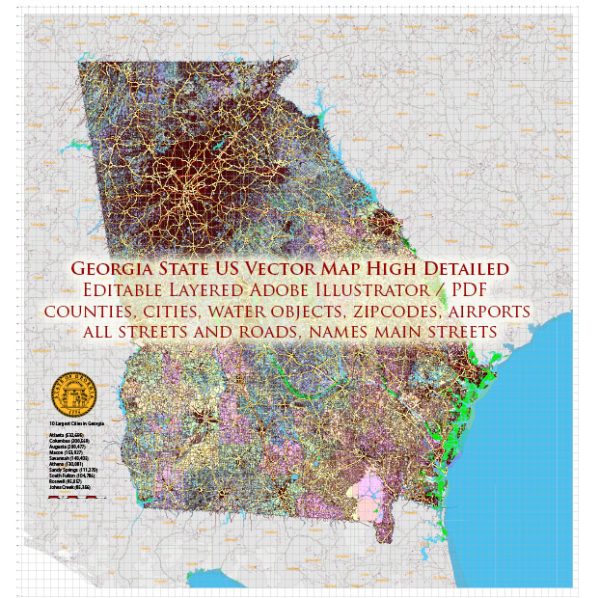General overview of the urban development history in Georgia State, focusing on key periods and trends.
- Early Settlement and Antebellum Period (1733-1860):
- Georgia was established as one of the thirteen colonies in 1733.
- Savannah, the state’s first city, was laid out in a grid pattern, and its design influenced subsequent urban development.
- During the antebellum period, plantations and agriculture dominated the economy, with the growth of towns and cities being somewhat limited.
- Civil War and Reconstruction (1861-1877):
- The Civil War had a significant impact on Georgia, and Atlanta, a major transportation hub, played a crucial role during the conflict.
- The city of Atlanta was largely destroyed during General Sherman’s March to the Sea in 1864.
- Reconstruction efforts focused on rebuilding the state’s economy and infrastructure.
- Post-Reconstruction and Industrialization (1877-1920):
- The late 19th and early 20th centuries saw rapid industrialization, with Atlanta emerging as a major economic center.
- Railroads played a key role in connecting Georgia to the rest of the country, facilitating trade and commerce.
- Atlanta’s population grew, and the city became known as the “New South” with a diversified economy.
- Great Depression and World War II (1929-1945):
- The Great Depression had a severe impact on Georgia, leading to economic hardships.
- World War II brought economic opportunities and industrial growth, with military bases and defense-related industries playing a vital role.
- Civil Rights Movement (1950s-1960s):
- Atlanta became a focal point for the Civil Rights Movement, led by figures such as Martin Luther King Jr.
- The movement brought attention to issues of racial segregation and injustice.
- Late 20th Century to Present:
- Suburbanization and population growth characterized the latter half of the 20th century.
- Atlanta continued to expand as a major business and cultural center, experiencing significant commercial development and the hosting of the 1996 Summer Olympics.
- Challenges such as urban sprawl, transportation issues, and disparities in economic development have been topics of concern.
- 21st Century:
- Atlanta has remained a key player in the Southeast, with ongoing urban development projects, including the BeltLine, a redevelopment project aimed at transforming old railroad tracks into a multi-use trail.
It’s important to note that urban development in Georgia is dynamic, and various factors, including economic shifts, demographic changes, and government policies, continue to shape the state’s urban landscape. For the most recent and detailed information, it’s recommended to consult current sources and studies.


 Author: Kirill Shrayber, Ph.D.
Author: Kirill Shrayber, Ph.D.